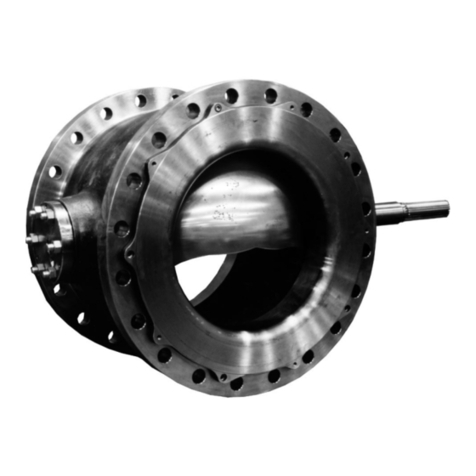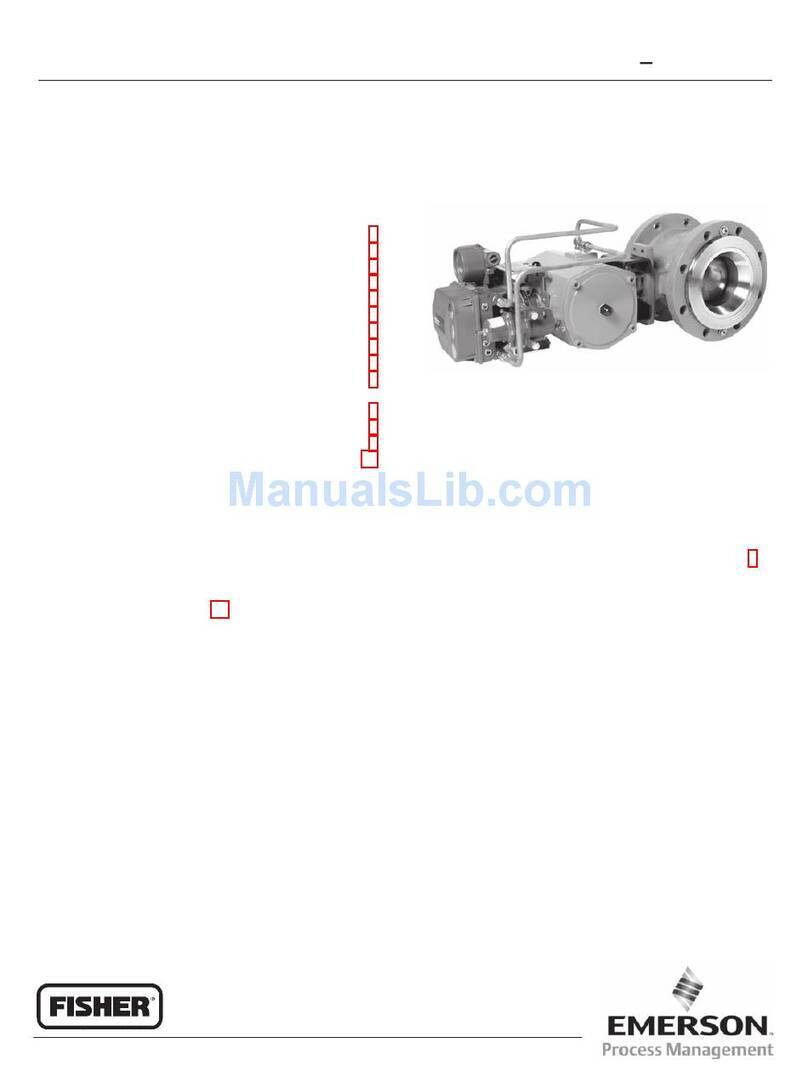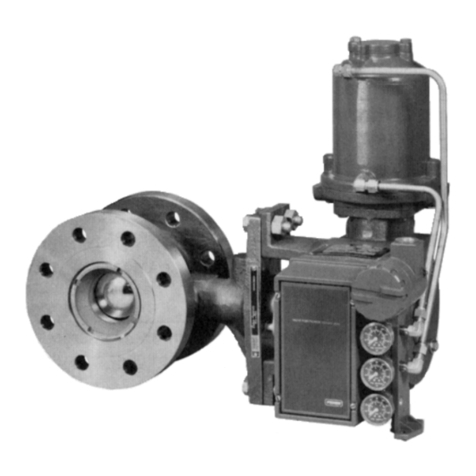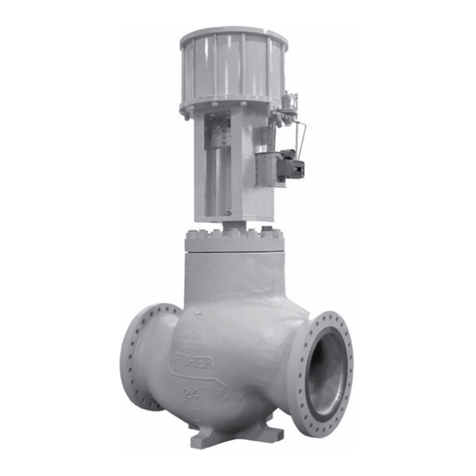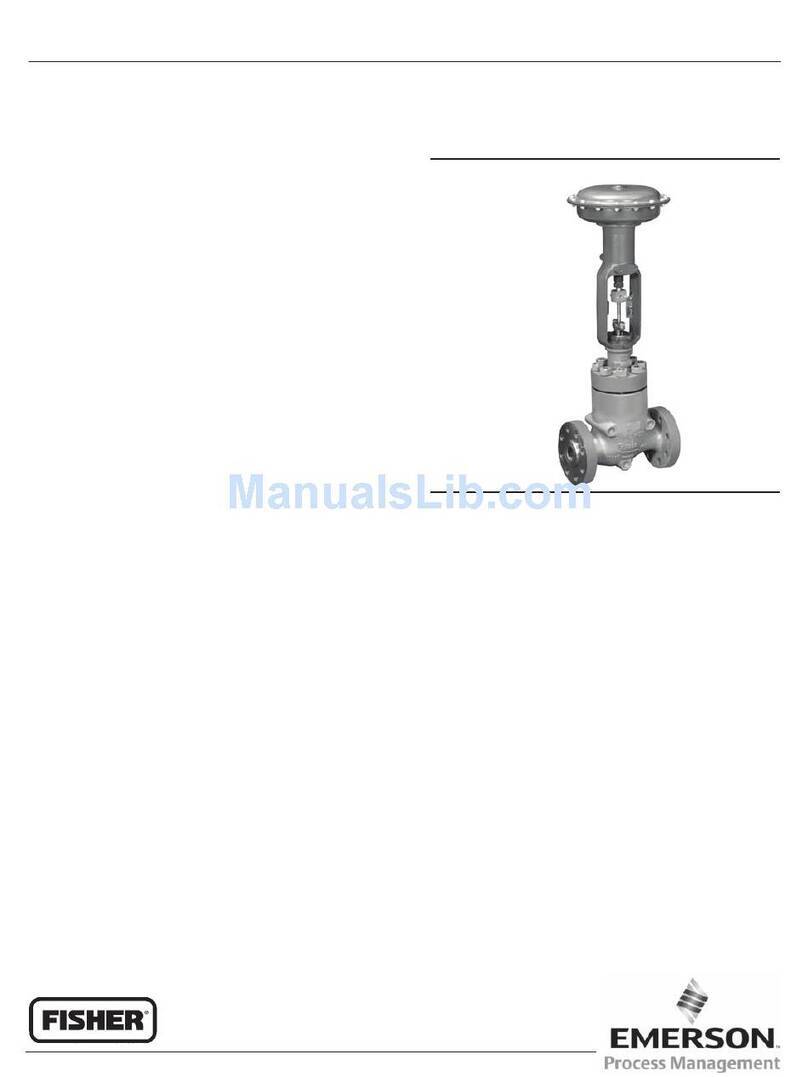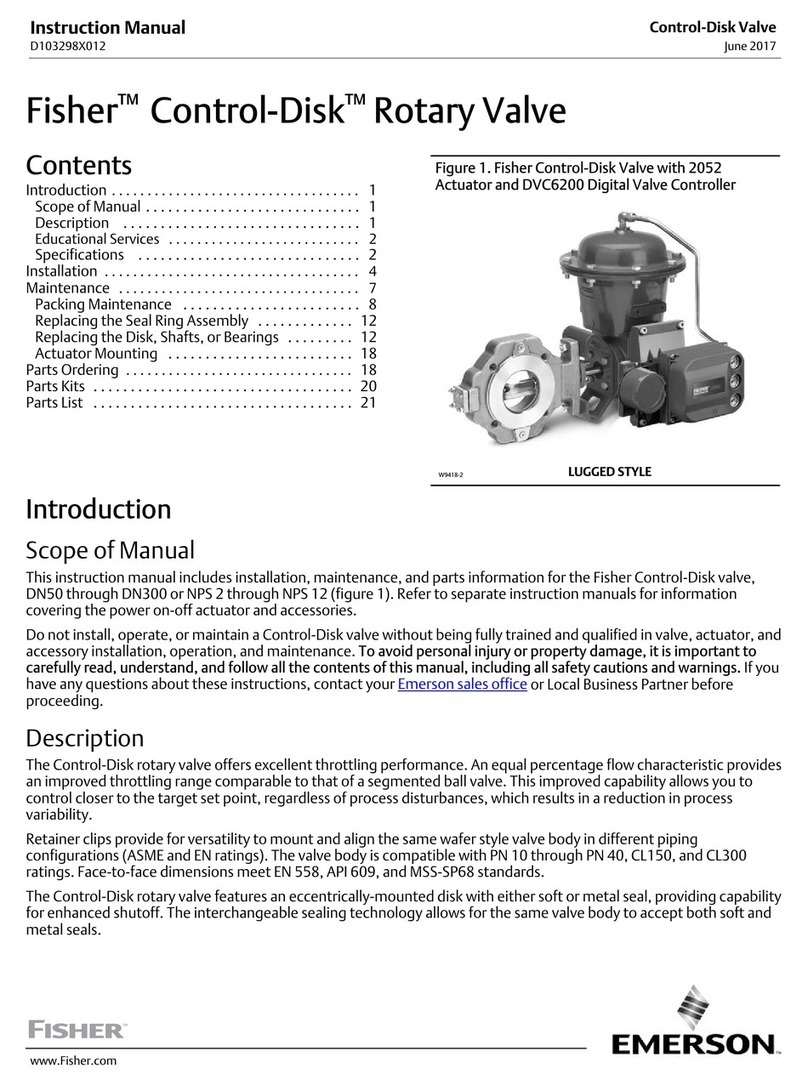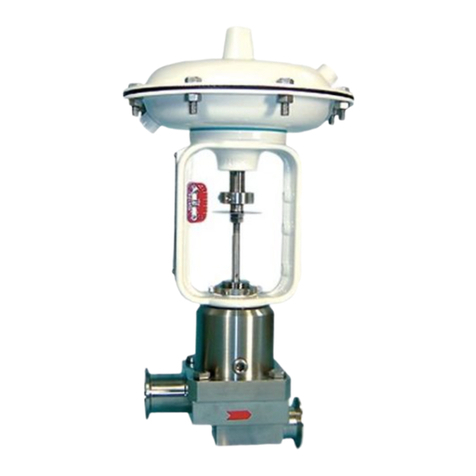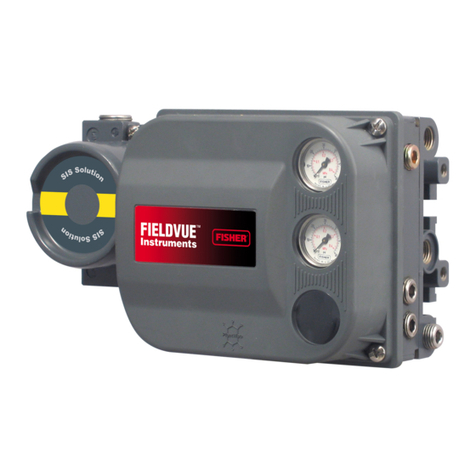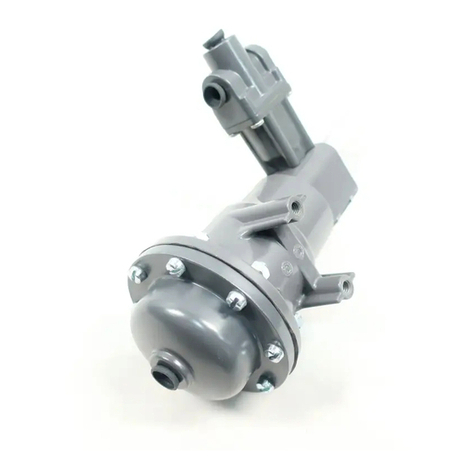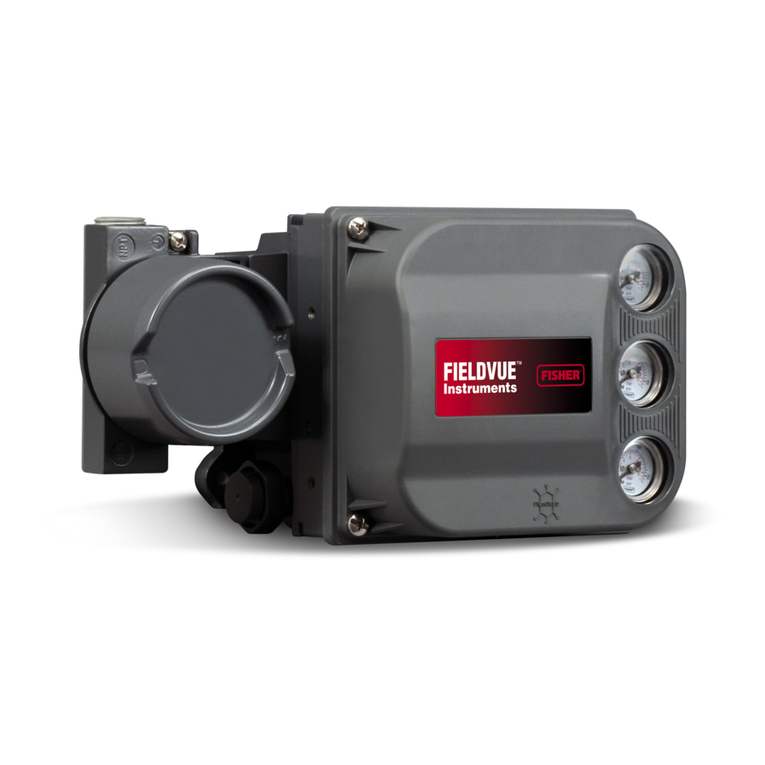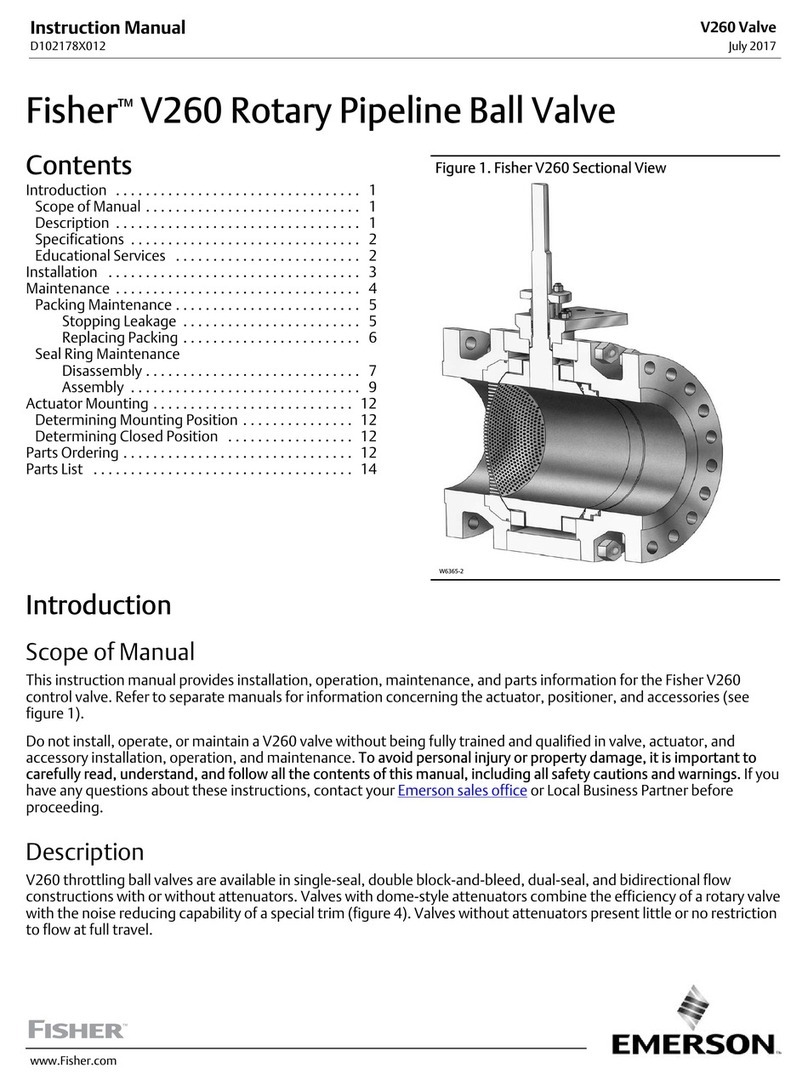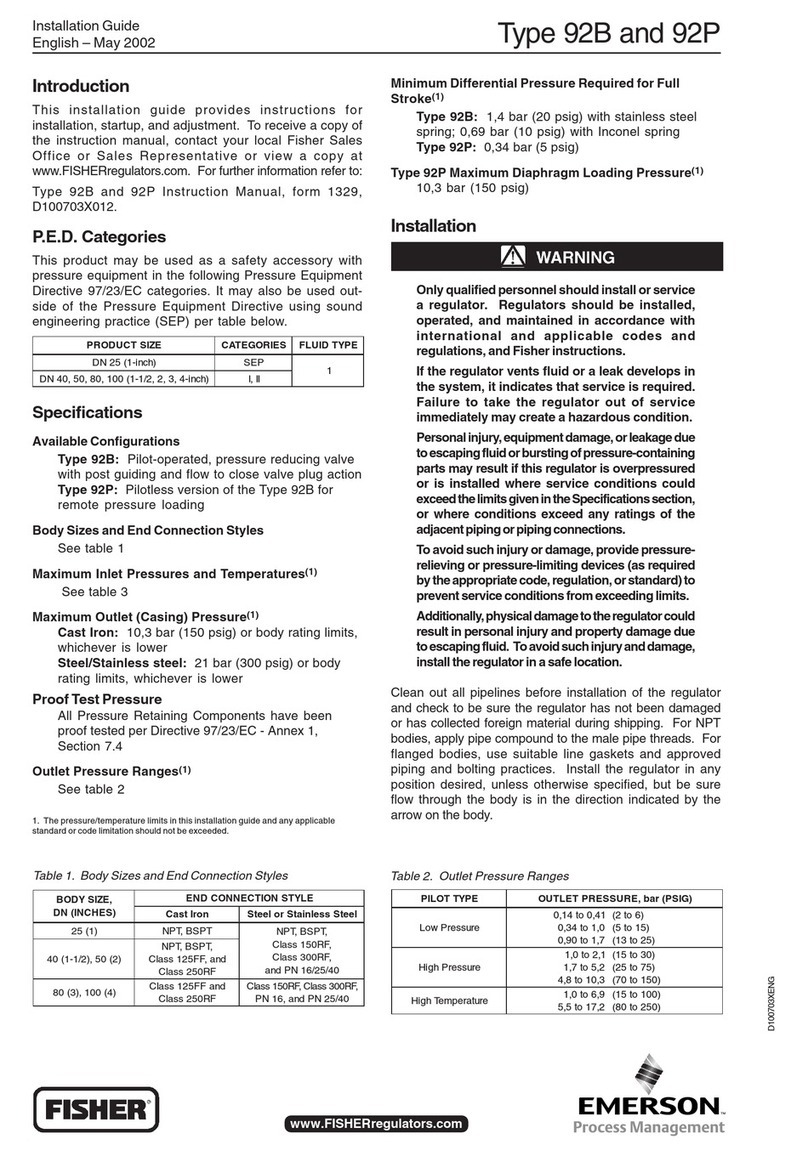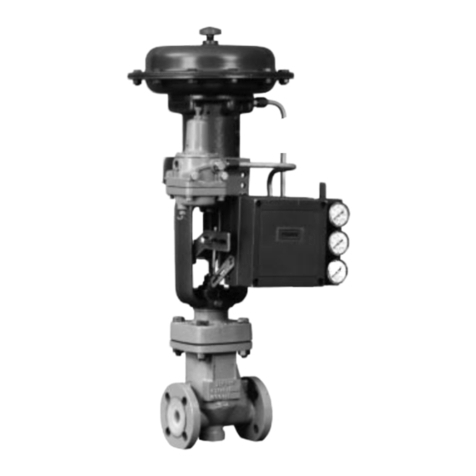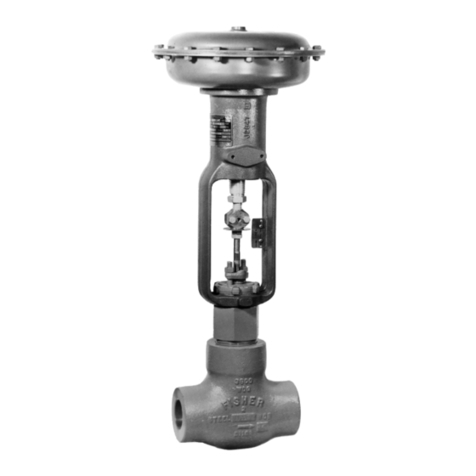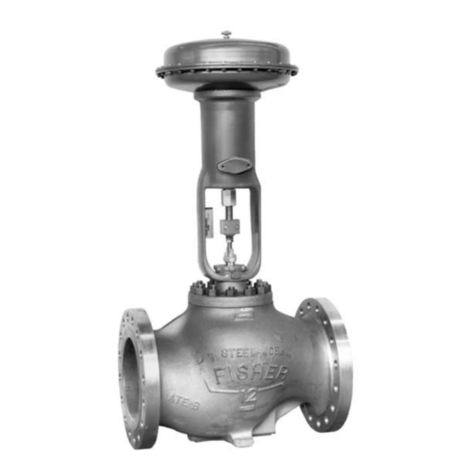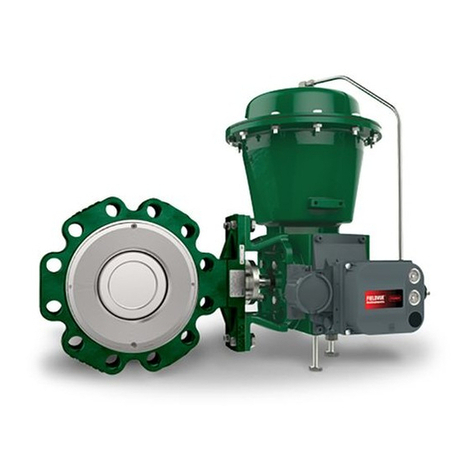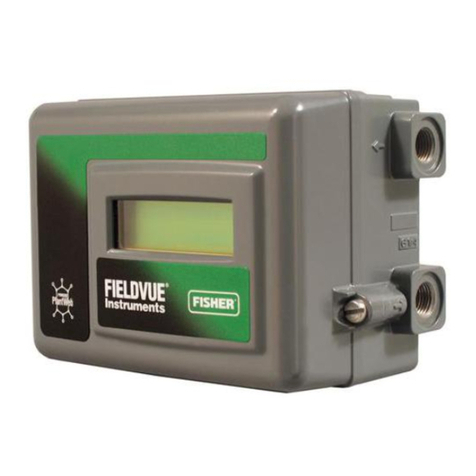
EH Valves (NPS 8 through 14)
Instruction Manual
April 2009
9
Table 6. Body-to-Bonnet Bolting Torques
VALVE
SIZE
NPS
VALVE
RATING
B7, B16, BD, 660
STUDS B8, B8M STUDS
NSm lbfSft NSm lbfSft
8, 10 CL1500 2710 2000 2035 1500
CL2500 4070 3000 3050 2250
12, 14 CL1500 8130 6000 6100 4500
CL2500 5830 4300 4370 3225
8. Remove the packing flange nuts, packing flange,
upper wiper and packing follower. Carefully push out
all the remaining packing parts from the valve side of
the bonnet using a rounded rod or other tool that will
not scratch the packing box wall. Clean the packing
box and these metal packing parts shown in the
figure 4 arrangements: packing box ring, spring,
lantern ring, washer if used, and packing follower
(keys 11, 8, 10, and 13).
9. Inspect the valve plug stem threads for any sharp
edges that might cut the packing. Use a whetstone
or emery cloth to smooth the threads if necessary.
10. Remove the protective covering from the valve
body cavity, and install the cage using new cage
gaskets (key 11, figure 12 or 13).
11. Install the plug and stem assembly. Be sure the
seal ring or piston rings are installed correctly as
described under Trim Replacement.
12. Slide the bonnet over the stem and onto the
bonnet studs (key 13, figure 12 or 13).
Note
Proper performance of the bolting
procedures in step 14 compresses the
cage gaskets (key 11, figure 12 or 13)
enough to seal the body-to-bonnet
joint.
The prelubricated hex nuts (key 14,
figure 12 or 13) referred to in step 14
can be identified by a black film
coating on the nut threads.
The proper bolting procedures in step
14 include, but are not limited to,
ensuring that the bonnet stud threads
are clean, and that the hex nuts are
evenly tightened to the specified
torque values.
CAUTION
Failure to comply with good
bonnet-to-body bolting practices and
the torque values shown in table 6 may
result in cage crushing, cage diameter
reduction, and/or bonnet deformation.
Do not use cheater bars or slug
wrenches for this procedure.
Hot torquing is not recommended; it
may result in damage to valve
components.
13. Lubricate the stud threads and the faces of the
hex nuts (key 14, figure 12 or 13) with anti-seize
lubricant (not necessary if new factory prelubricated
hex nuts are used). Replace the washers and hex
nuts but do not tighten them. Torque the nuts in a
crisscross pattern to no more than 1/4 of the nominal
torque value specified in table 6. When all nuts are
tightened to that torque value, increase the torque
by 1/4 of the specified nominal torque and repeat the
crisscross pattern. Repeat this procedure until all
nuts are tightened to the specified nominal value.
Apply the final torque value again and, if any nut still
turns, tighten every nut again.
14. Install new packing and the metal packing box
parts according to the appropriate arrangement in
figure 4. Slip a smooth-edged pipe over the valve
stem, and gently tamp each soft packing part into
the packing box.
15. Slide the packing follower, wiper, and packing
flange into position. Lubricate the packing flange
studs (key 4) and the faces of the packing flange
nuts (key 5) and then install the packing flange nuts.
For spring-loaded PTFE V-ring packing: Tighten
the packing flange nuts until the shoulder on the
packing follower (key 13) contacts the bonnet
(key 1).
For other kinds of packing, except ENVIRO-SEAL
and HIGH-SEAL: Tighten the packing flange nuts to
the maximum recommended torque shown in
table 5. Then, loosen the packing flange nuts and
retighten them to the recommended minimum torque
in table 5.
For ENVIRO-SEAL and HIGH-SEAL packing: See
the Fisher instruction manuals titled ENVIRO-SEAL
Packing System for Sliding-Stem Valves or
HIGH-SEAL Live-Loaded Packing System (as
appropriate) for packing instructions.
